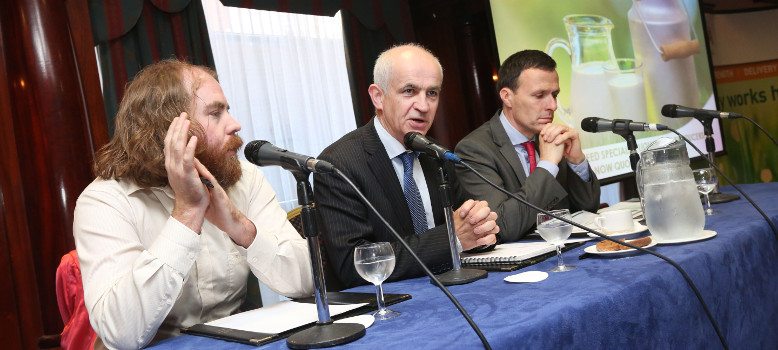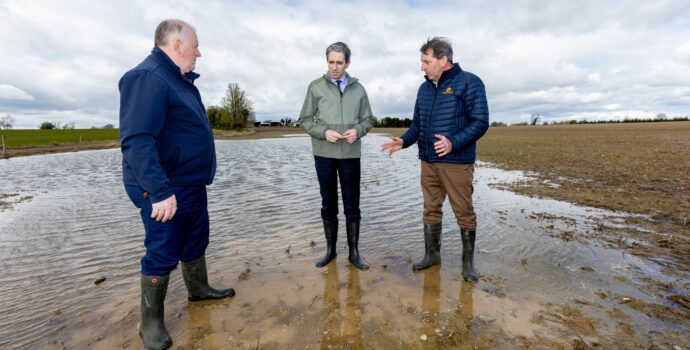Strategic Rethink and Market Regulation Required to Secure Fresh Milk Post-quota

Launching a new IFA Liquid Milk Handbook today (Thurs), IFA President Eddie Downey said fresh, locally produced supplies of milk for consumers could not be taken for granted without appropriate regulation of the liquid milk market, securing adequate remuneration of specialist producers’ full costs.
“The liquid milk trade is our most important domestic retail market for Irish milk, and is worth just under 20% of our exports at €530m. Yet, following the end of quotas, this is the first winter during which liquid milk producers have a choice to expand production of non-liquid milk. With base milk prices now below production costs, many farmers will be pushed by pure economics to streamline their system and abandon their liquid milk contractual commitments,” Mr Downey said.
IFA Liquid Milk Chairman Teddy Cashman added: “The IFA is launching a Liquid Milk Handbook at this crucial time to raise awareness among all stakeholders, especially dairies, retailers, politicians, the media and consumers, of the tremendous nutritional and economic value of our fresh milk and the vulnerability of specialist liquid milk production now that expansion opportunities exist for exportable milk”.
“We want people to realise that they cannot take the consistent availability of high-quality, fresh, locally-produced milk for granted,” Mr Cashman said.
“Producing milk for a daily liquid milk contract requires farmers to calve a sufficient number of their cows in autumn. This creates significant additional feed and labour costs and a multitude of system complexities. While the contracted volume is of sufficient critical mass relative to the rest of the milk produced, and while the contracted litres are sufficiently well remunerated by a strong winter premium, farmers may well decide to expand the non-liquid part of their production without questioning their continued commitment to liquid milk,” he said.
No turning back from move to creamery milk
“However, while retail returns are stable, base (creamery) milk prices are very volatile. With static to decreasing individual liquid milk contract volumes, we are seeing this year the type of conditions that would easily push farmers to focus on creamery milk to minimise costs and streamline their system to allow the business more flexibility in dealing with milk price/feed cost volatility. And once that decision is made, there is no turning back,” he warned.
“In publishing our Handbook, we want all stakeholders in the liquid milk chain – farmers, dairies, retailers and regulators – to take a long hard look at the contract and payment systems in place today, to assess what changes are needed to make them fit for purpose in the post-quota era. It is a simple fact that higher winter payments will be required to secure consistent fresh milk supplies year-round,” he said.
“We have made specific recommendations to better regulate the sector and improve its sustainability and resilience, and those are covered in detail in our Handbook,” he said.
“However, I believe the single most important consideration is the need for the Irish dairy sector to realise the value of our domestic liquid milk market – over €530m at retail level. It would take considerable investment and effort to generate this kind of value through further export expansion, so let’s appreciate, nurture and develop what we have,” Teddy Cashman concluded.
The IFA Liquid Milk Handbook is available to download here




